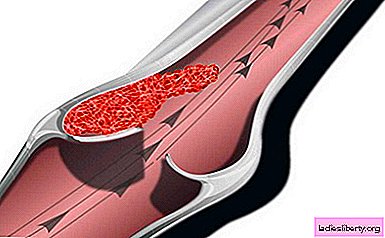
Gonorrhea - This is a type of sexually transmitted disease that is caused by gonococcus. In this case, the mucous membranes of the genitourinary organs will be affected. Can also be affected: rectum, conjunctiva, pharyngeal mucosa.
Gonococci are not very resistant to the environment, they are not able to exist outside the human body and die when the substrate dries, this virus also dies in soap and water, in addition, antibacterial and antiseptic agents have a destructive effect on gonococcus. It is worth noting that gonococci in the human body are able to quickly get used to various sulfa drugs and antibiotics.
In general, this disease is transmitted sexually. It is also possible domestic infection, if there were violations of hygiene rules.
Gonorrhea - the causes of the disease
So, we have already figured out that such a disease as gonorrhea is caused by gonococci. They are able to settle in the cells of the mucosa and urethra, while causing an inflammatory process. During intercourse, these bacteria are transmitted to the partner. Since these bacteria cannot live in the environment, the likelihood of infection through a towel, washcloth, and other toiletries is very small.
Gonorrhea - symptoms of the disease
The very first symptoms of gonorrhea infection in men are yellow discharge from the penis, and there may also be a disease when urinating. Such symptoms may appear after two to ten days, but there are cases when the first symptoms appear after a month, caused by a bacterial infection and caused by inflammation of the urethra. One of the body's reactions to such bacteria is discharge, similar to pus, they are able to stain clothes. Most interestingly, ten percent of men may have completely no symptoms, which means that a person is able to spread gonorrhea without even knowing that he is sick.
In women, in most cases, infection with a disease such as gonorrhea is completely asymptomatic, therefore, a sufficiently long period passes before treatment begins. This period significantly increases the risk that a number of complications will appear, so that without even knowing about their illness, women will automatically become the spread of this infection.
Gonorrhea - diagnosis of the disease
In men, gonorrhea is diagnosed through microscopic examination of those secretions from the urethra after staining the secretions with a special dye. And the reliability of this method is more than ninety percent, so from time to time it is worth taking tests. And for those men who had homosexual connections, they also take tests from the urethra.
But for women, the only way to diagnose is sowing. But in any case, you can not do without smears of the cervix and from the rectum. Also, in some cases, throat swabs are taken. The main thing is that nowadays there is no maximally effective method for detecting such a gonorrhea disease.
Gonorrhea - treatment and prevention
The most effective treatments for gonorrhea are penicillin injections while taking probenecid tablets, which can inhibit the excretion of penicillin in the urine. Many centers also recommend treating this disease with an antibiotic - ceftriaxone with doxycycline.
For prevention, it is recommended to regularly donate blood for syphilis, as well as tests for HIV infection. In addition, those who had an act with a patient with gonorrhea must undergo a mandatory examination for thirty days, this includes sowing and a certain course of treatment, since the likelihood of getting gonorrhea is high.
Do not forget about personal prophylaxis: use a condom, and if sexual intercourse has occurred with an accidental partner, wash your genitals with soap and water, and experts recommend visiting an individual prevention center within two hours after sexual intercourse.











